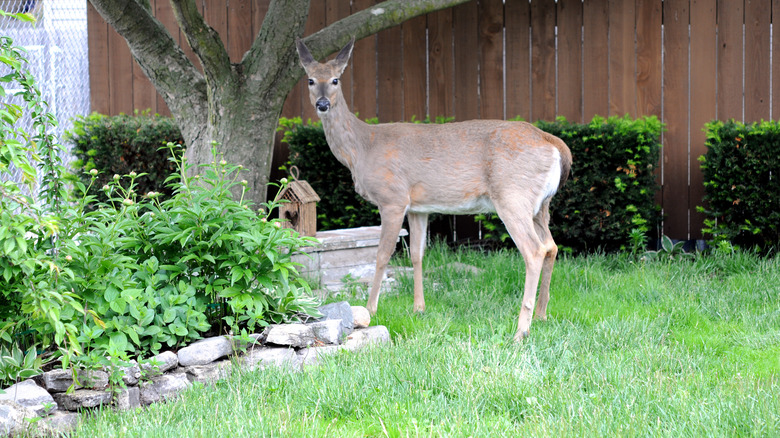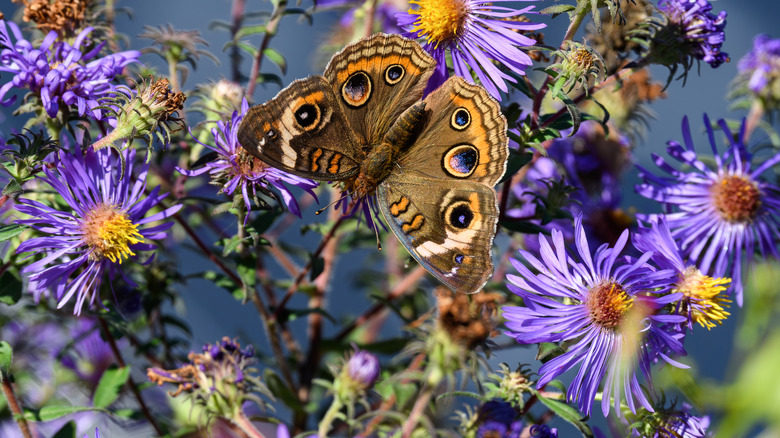The Beautiful Purple Flower That Deer Will Avoid If You Plant It In Your Yard
Few things are more disheartening than spending days planning and planting a flower garden, only to have it decimated by deer within a night or two. Fortunately, there are some flowering plants that are deer resistant, in addition to being stunners in the garden. One of the prettiest deer-resistant flowers is the North American native known as New England aster (Symphyotrichum novae-angliae). These beautiful flowers still go by the common name despite the fact that they are technically no longer considered members of the Aster genus. While these perennial beauties generally don't start blooming until late summer or early autumn, they're more than worth the wait thanks to their vibrant violet petals and bold yellow centers. You can purchase these asters as young plants, or save money by growing them from seed.
Deer dislike these plants because they're tough to chew and offer little nutritional value compared to other vegetation. This means that they'll generally not be attracted to your New England asters as long as more palatable plants are growing nearby. Despite their lack of appeal for deer, New England asters are huge hits with pollinators, attracting bees and butterflies. They're also host plants for some types of caterpillars.
Growing and caring for New England asters
Hardy in zones 4 through 8, New England asters thrive in full to part sun. They grow best in fertile, clay-heavy soil. They are not overly picky on soil moisture, making them a snap to take care of. As long as they have good airflow, New England asters are relatively disease resistant as well.
Most cultivars of the New England aster grow to heights of 5 feet, making them perfect for growing towards the back of garden beds, where they won't overshadow shorter flowers. The 'Purple Dome' cultivar, however, only reaches about 2 feet, making it an ideal option for the fronts of garden beds. New England asters pair well in other North American asters, like the aromatic aster (Symphyotrichum oblongifolium), whose leaves boast a pleasant smell. These asters also make good companions for goldenrod (Solidago rugosa), which is also a native deer-resistant that blooms in late summer and autumn. With the right plants, you can have a deer-free garden full of fall-blooming perennials.

